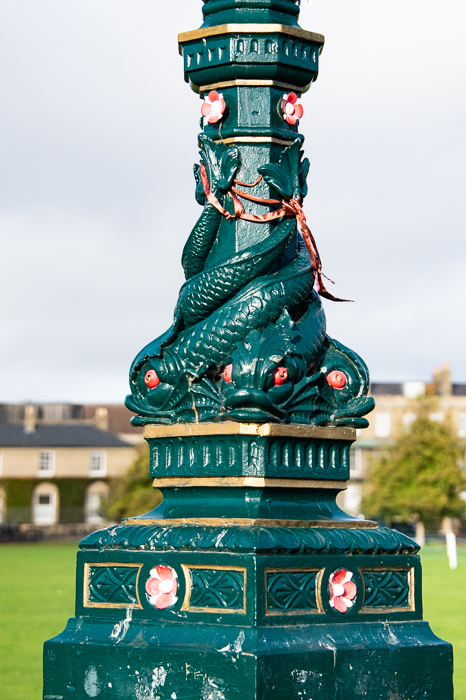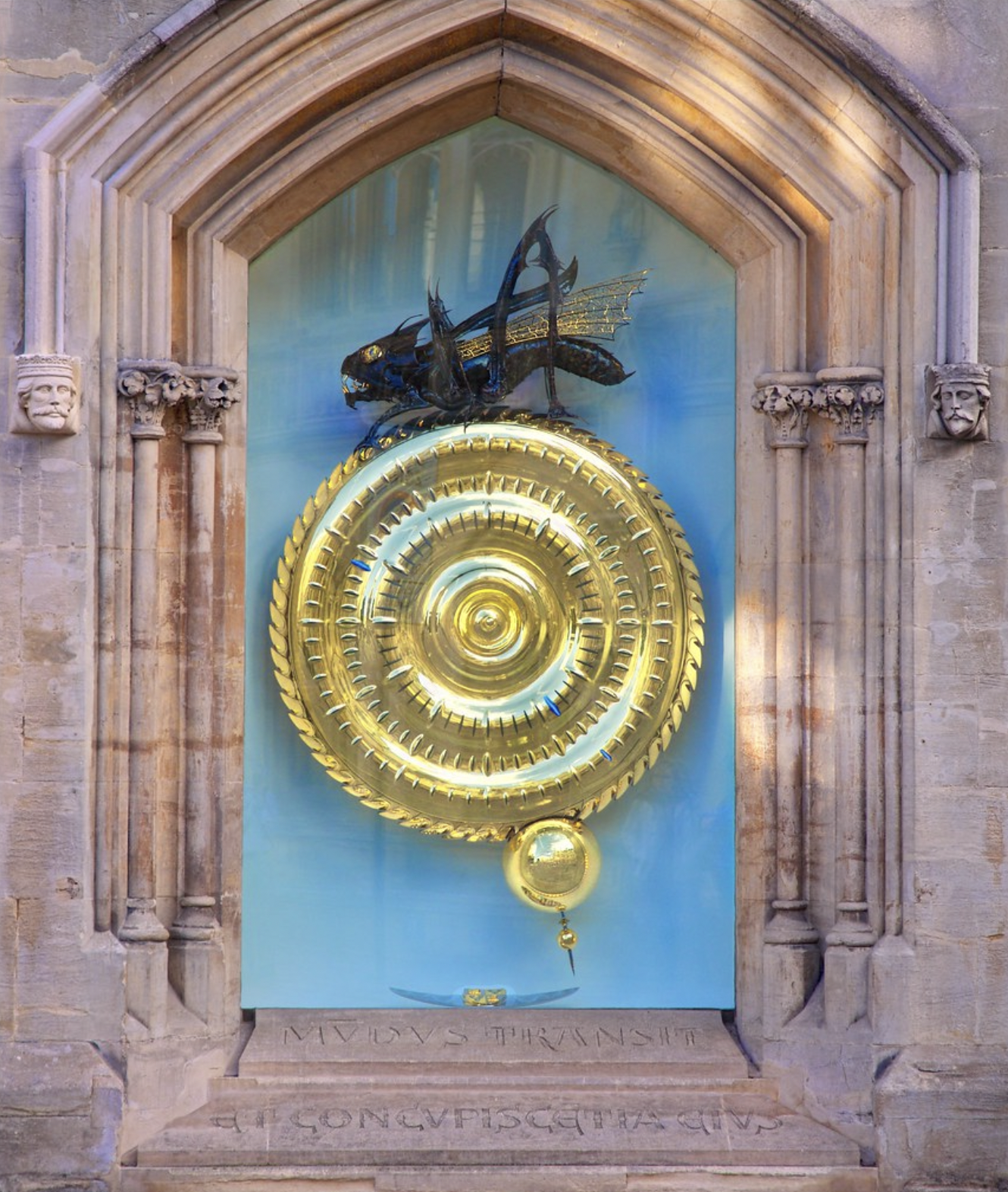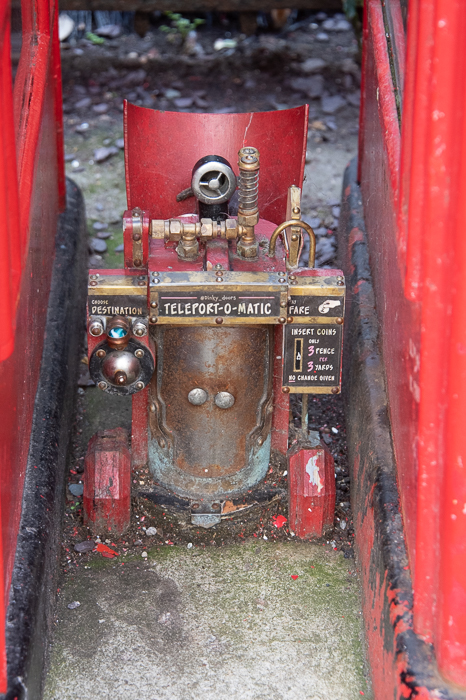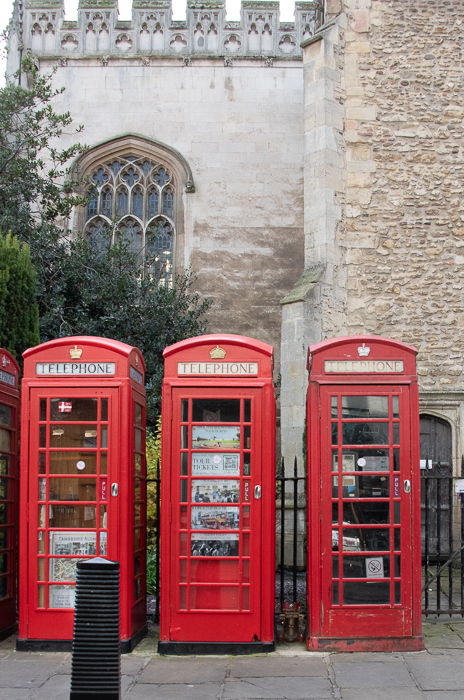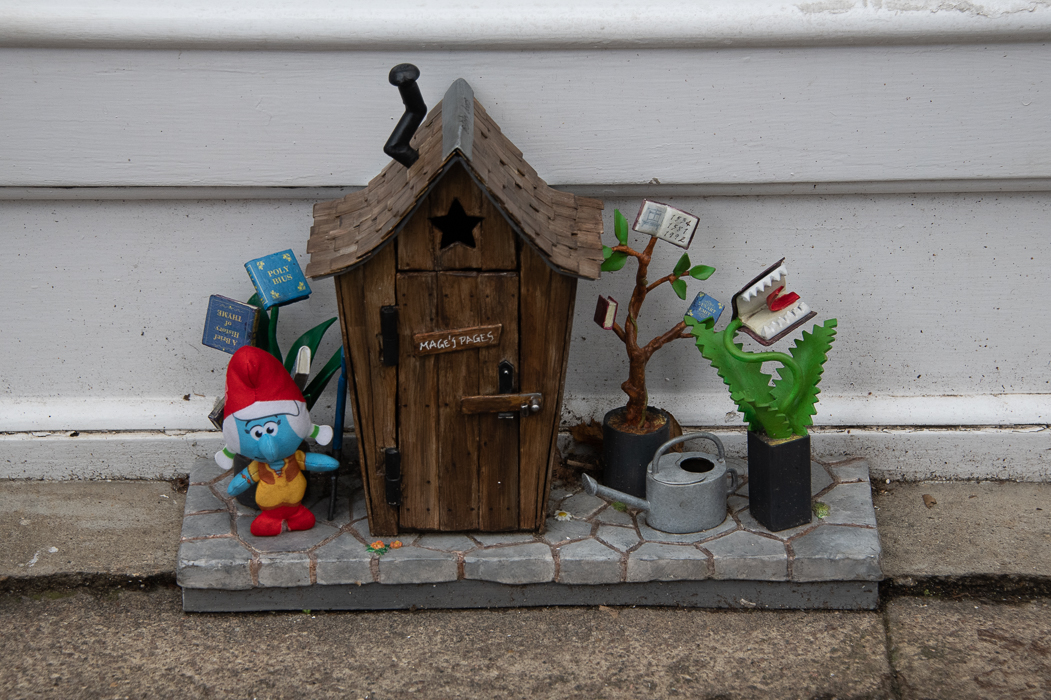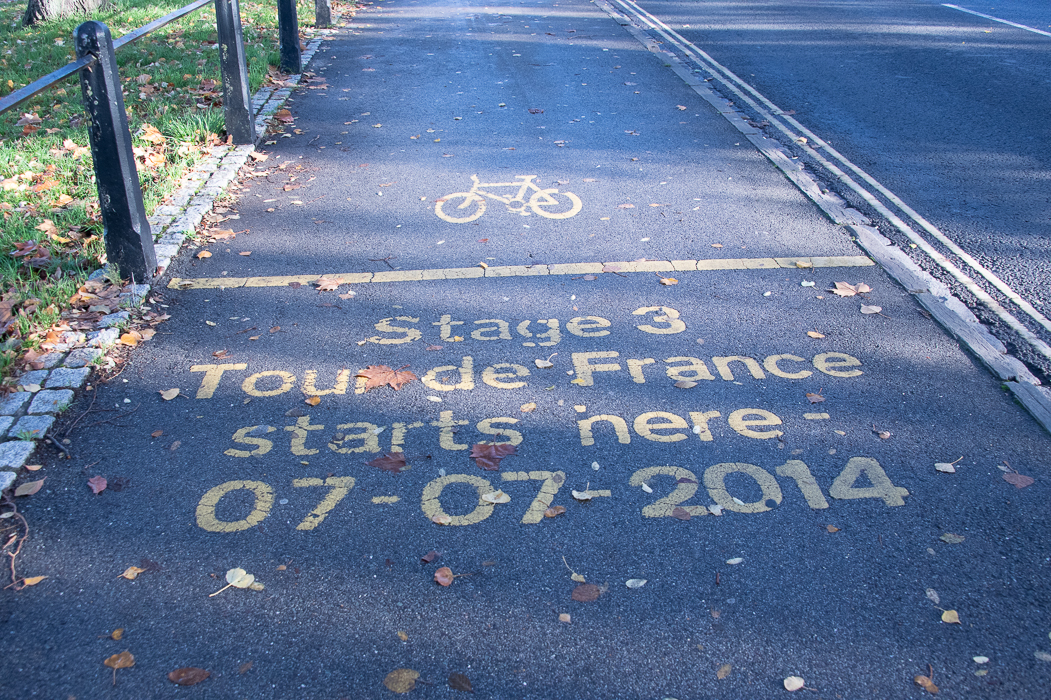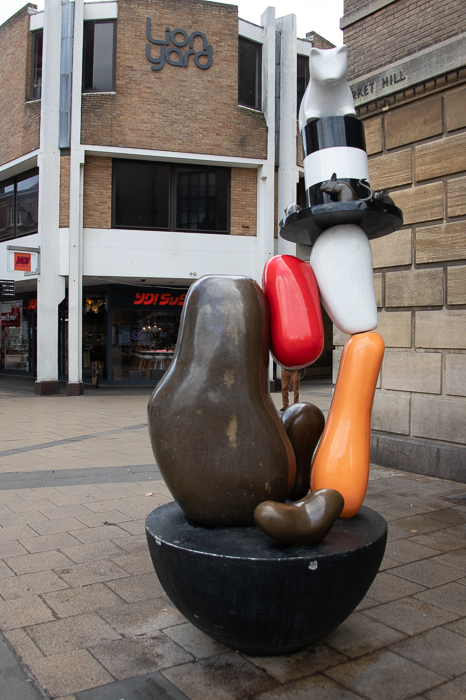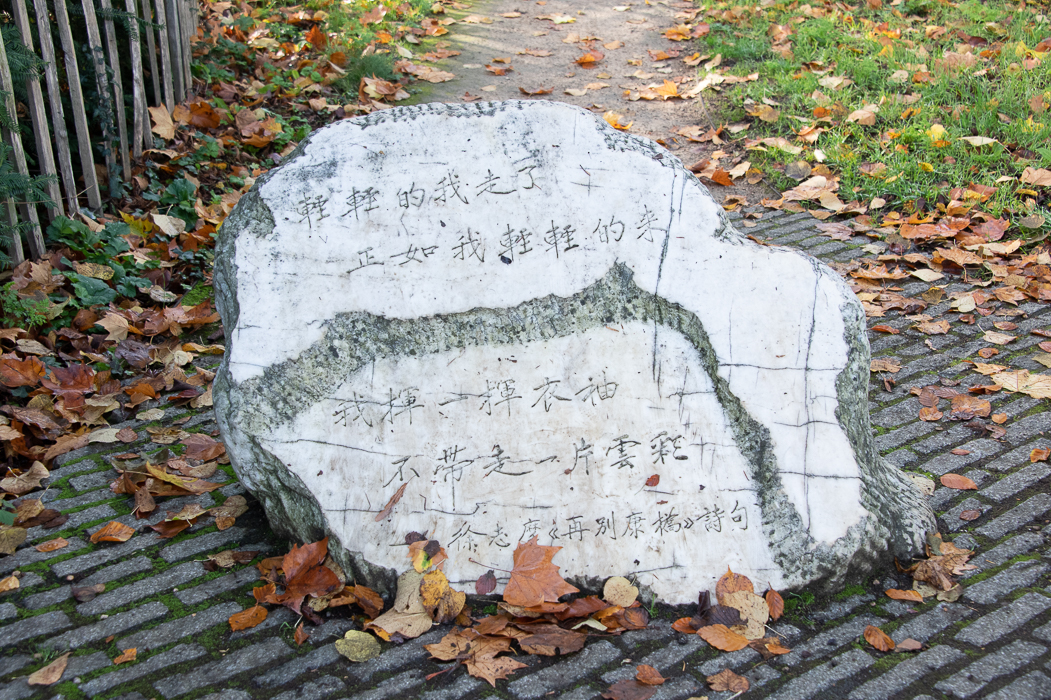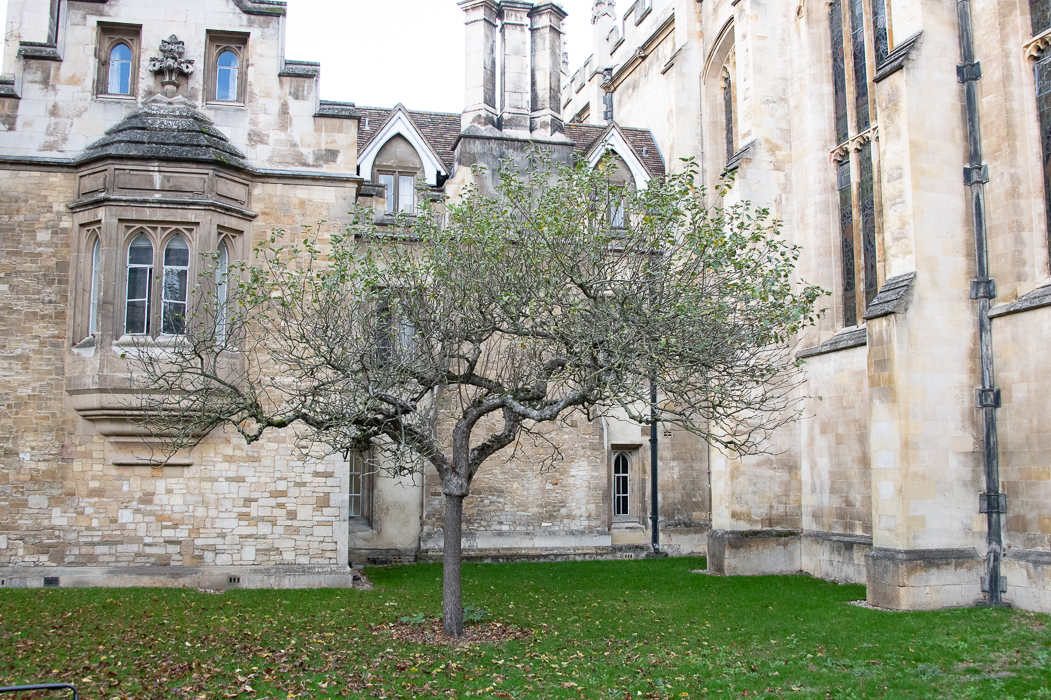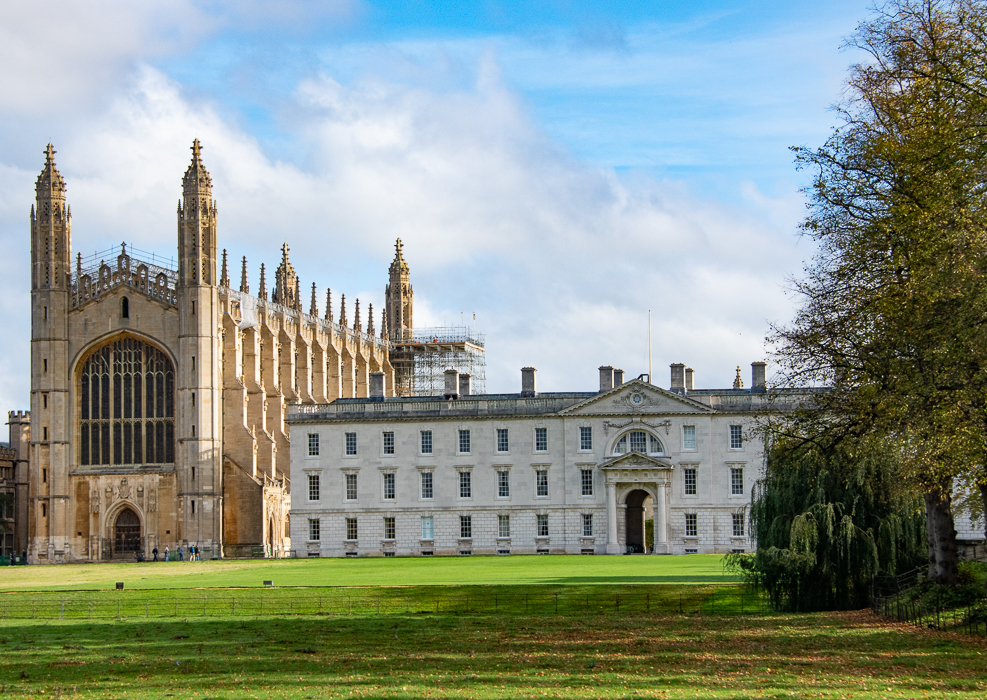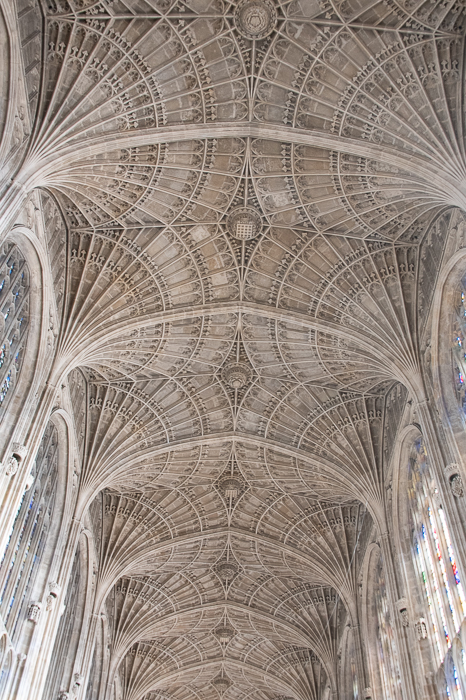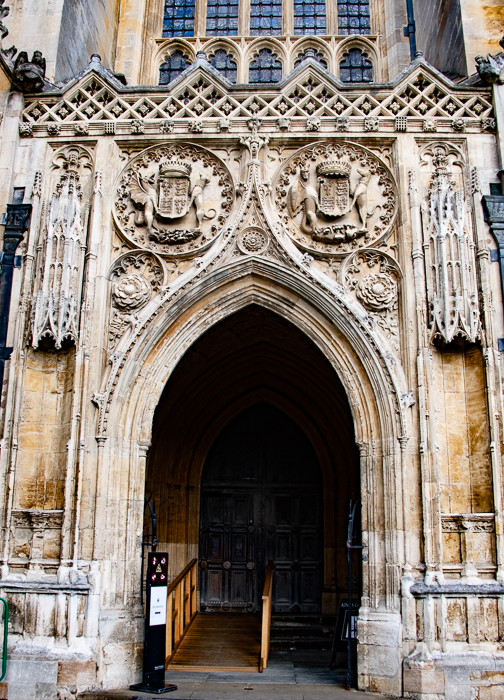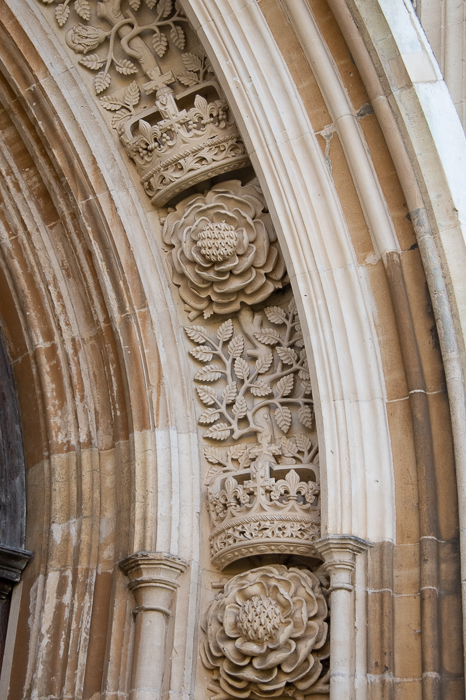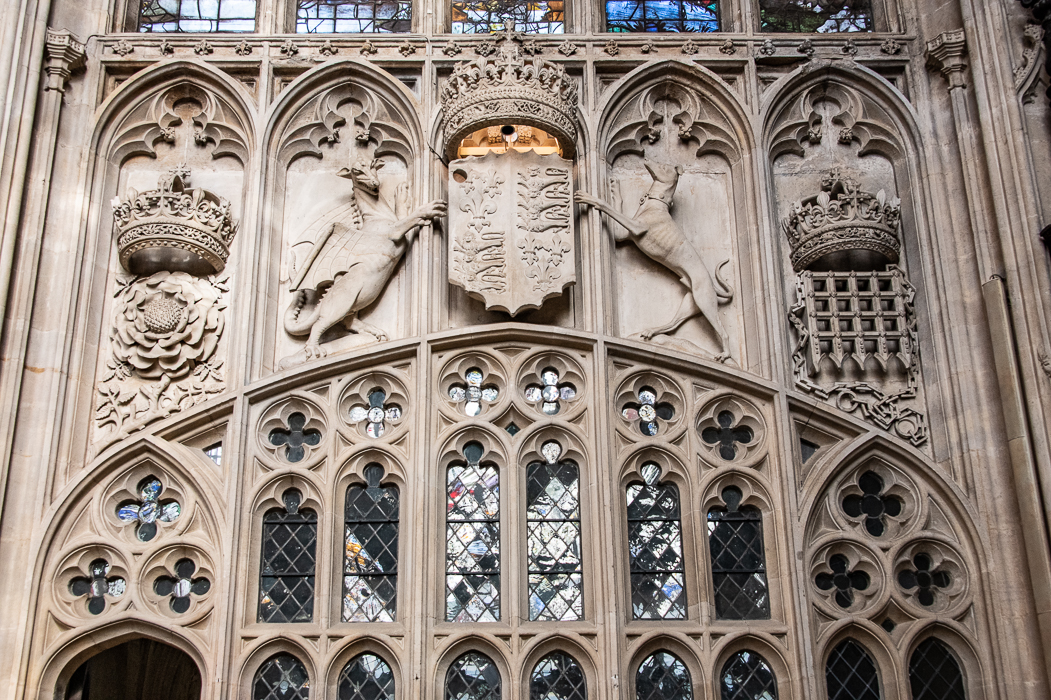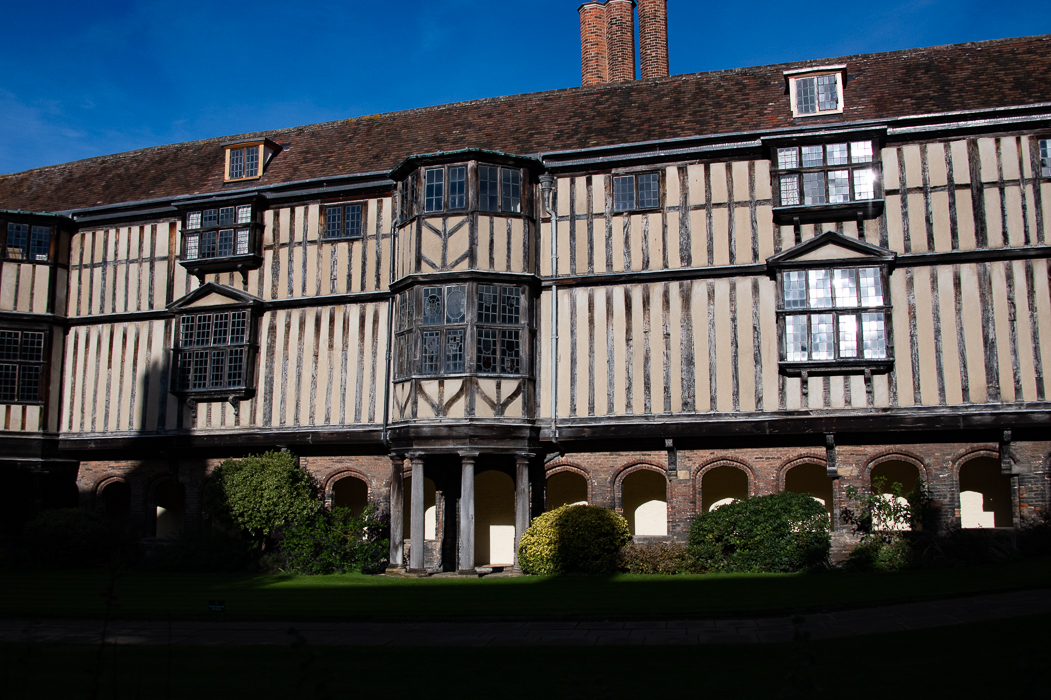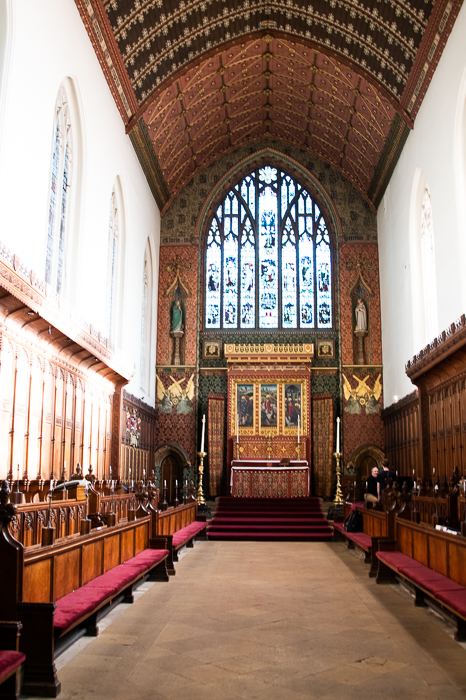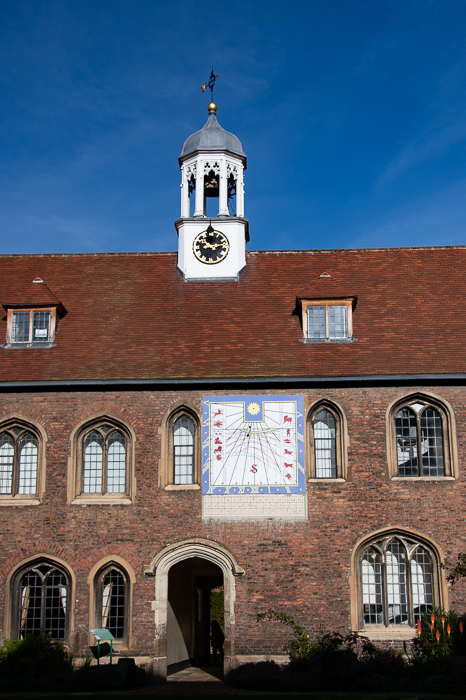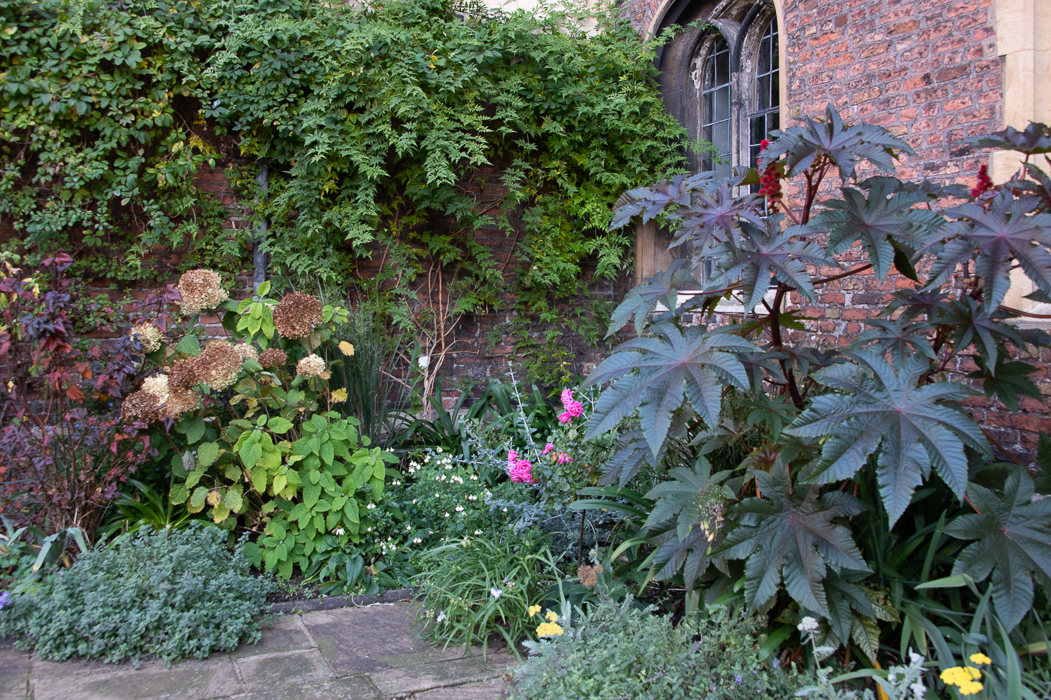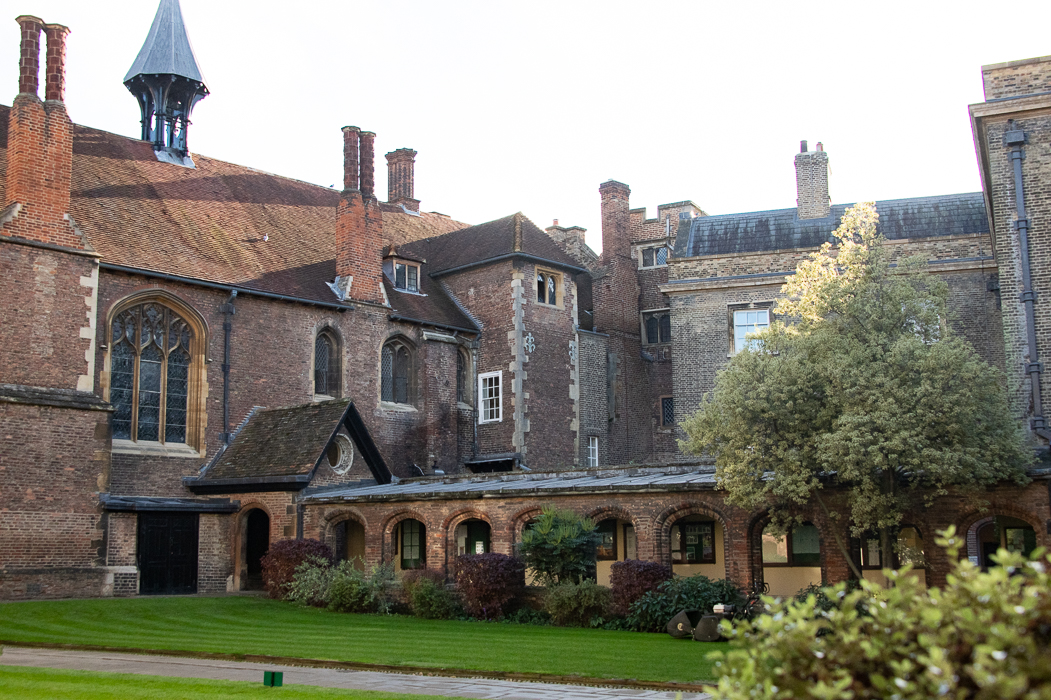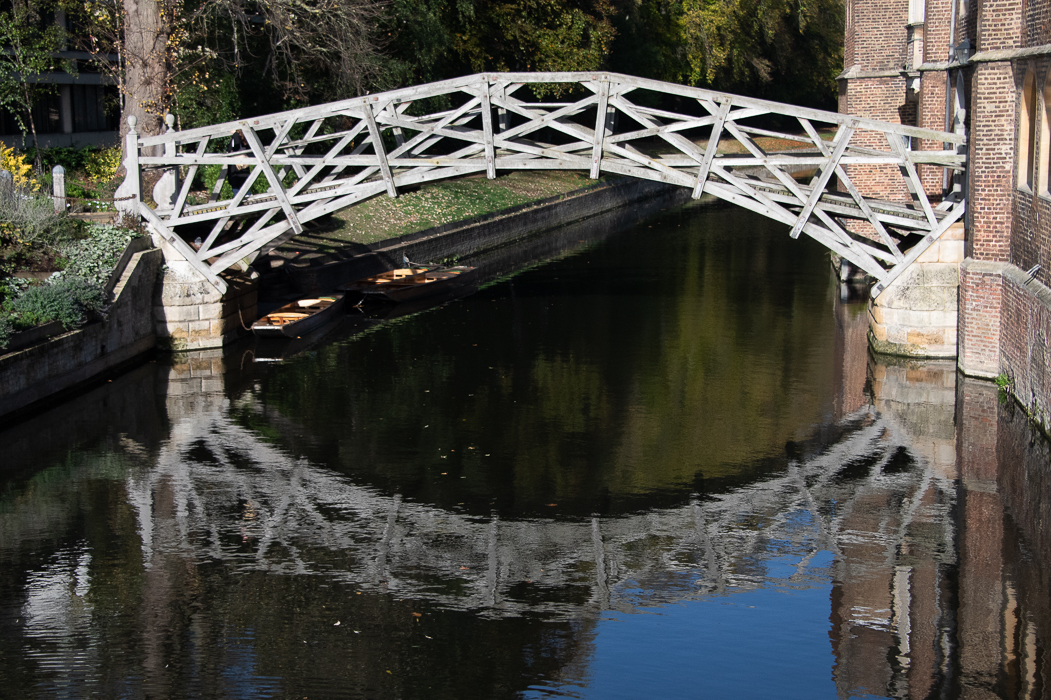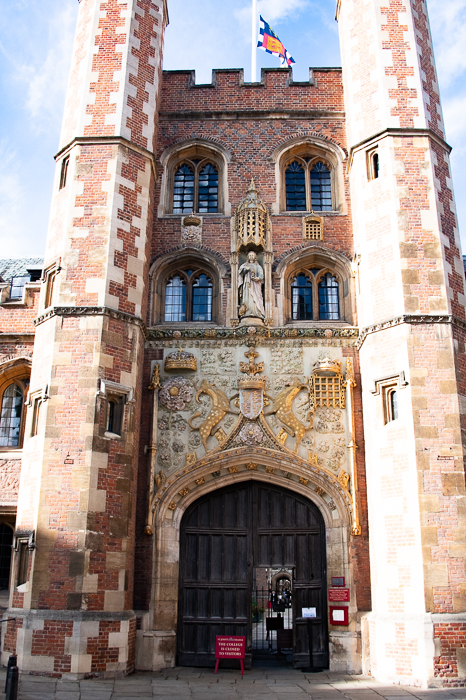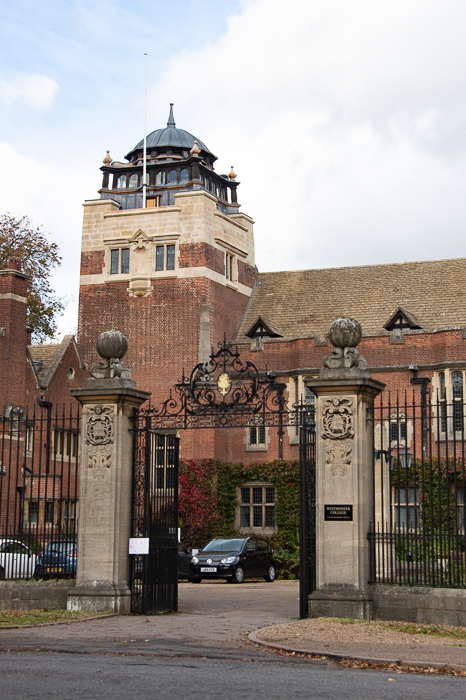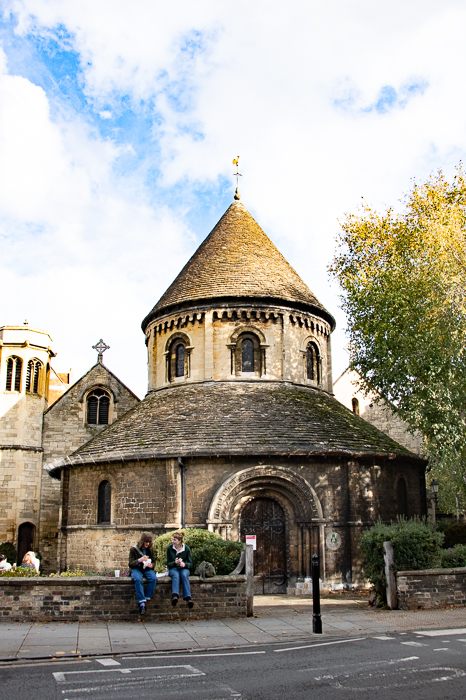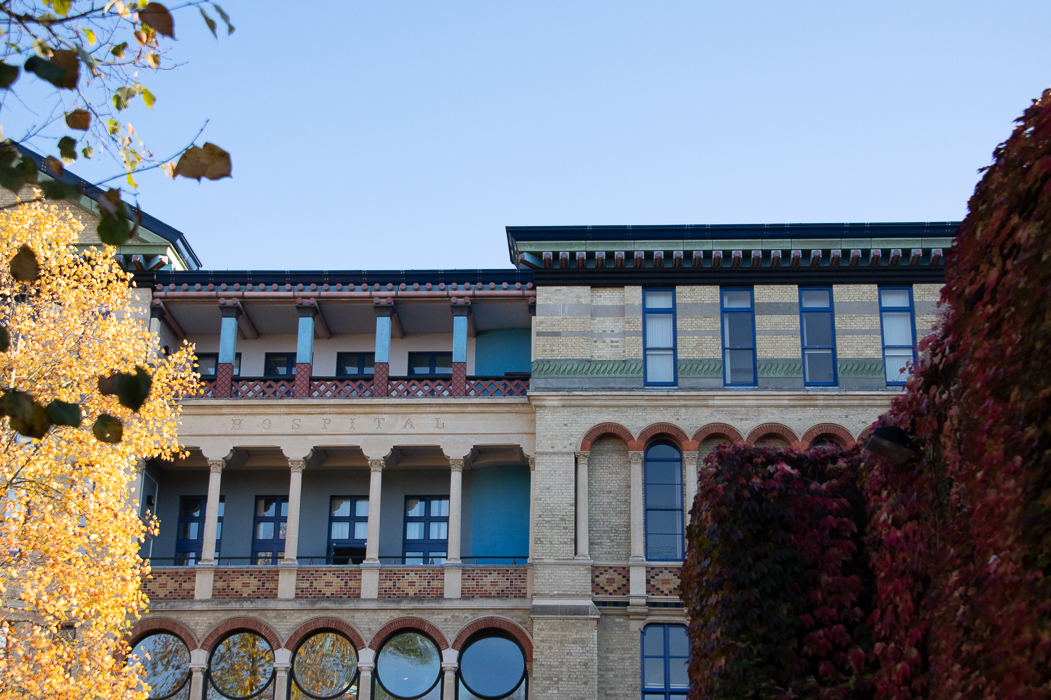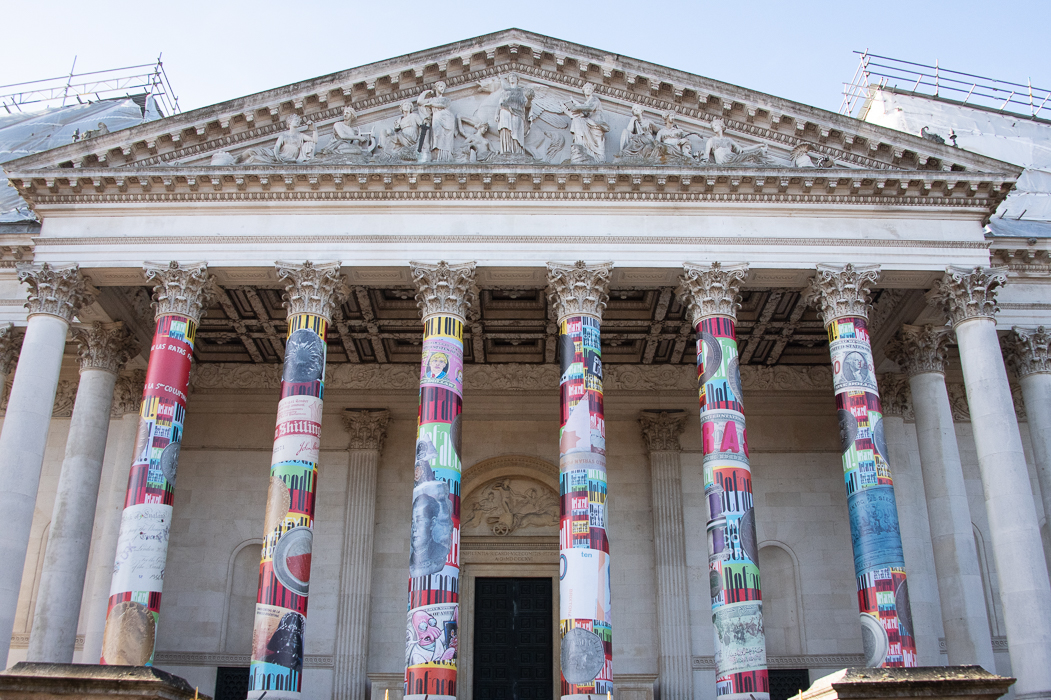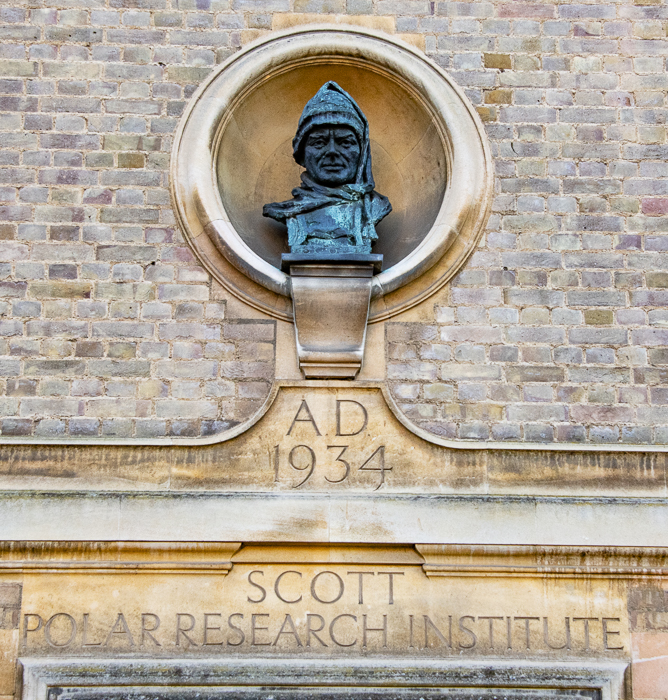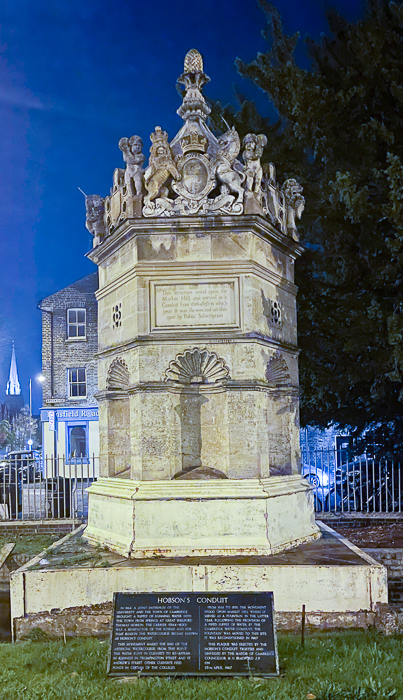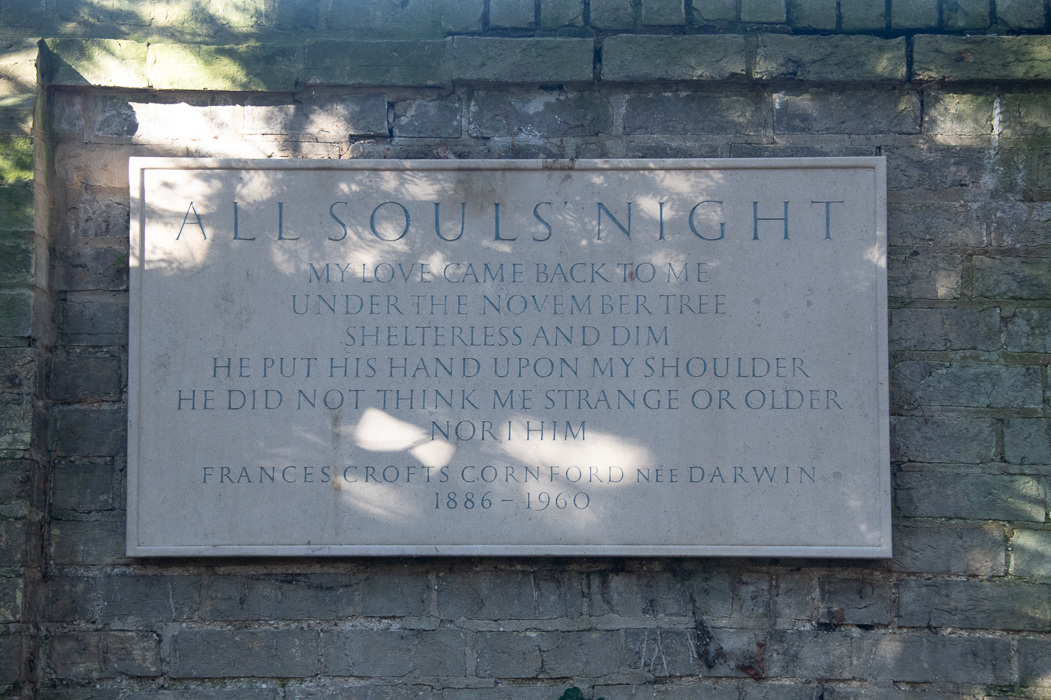As a tourist, I must admit I prefer Cambridge over Oxford. Very simply because its entire downtown is pedestrian and it is not growing upwards so it still has a very comfortable spatial feel to it.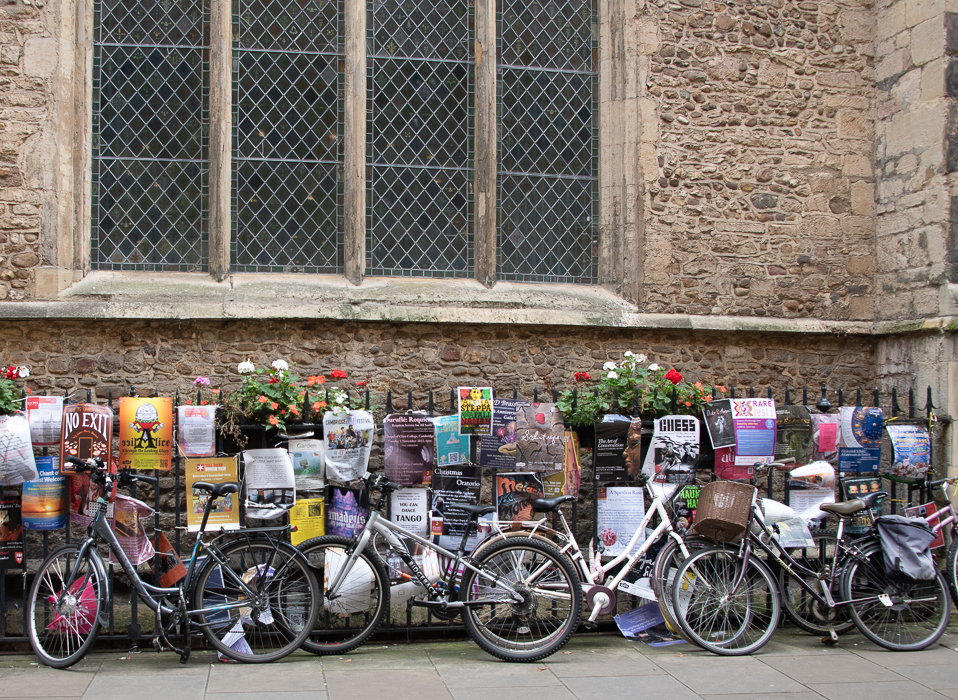
However…bicycle usage is overwhelming, which under normal circumstances I would applaud, but I am afraid the youthful, unfettered cyclists can make being a pedestrian a bit frightening at times.
Oddities
This lampost is smack in the middle of Parker’s Piece. There are several theories as to how it got its name, but I am rather fond of the one that says it marks the boundary between the central university area of Cambridge (referred to as the “reality bubble”) and the “real world” of townspeople living beyond. One is warned to check one’s notions of reality before passing.
The Corpus Clock is fairly new considering most everything else in Cambridge as it dates from 2000.
- The ripple design alludes to the Big Bang, with the center considered to show the beginning of time.
- The ‘grasshopper’ that sits atop is actually a ‘Chronophage,’ which means time-eater, devouring each minute as it passes with a jaw that snaps shut.
- When an hour strikes, there is no chime. Instead, one hears the shaking of chains and a hammer hitting a wooden coffin which represents the passing of time which ultimately leads to death. This is reinforced by the Latin inscription which sits underneath the clock – ‘Mundus transit et concupiscentia eius,’ meaning ‘the world and its desires pass away.’
As fitting a University the creation, construction, and completion of the clock was not a simple task. Here is the story according to Oxford Summer Courses:
In theory, it goes all the way back to 1725 when Englishman John Harrison invents the grasshopper escapement – a mechanical cog-like device that helps to regulate a clock’s pendulum movement and reduce incorrect time readings.
In 1999, John C Taylor, one of Cambridge’s horologist alumni and inventor of the kettle returned to the city for the first time after having graduated in 1956. Having seen that his college – Corpus Christi – hadn’t changed in the 40 years since he was there, he offered the college the funds to transform the (once before) bank into a brand new library. To mark the occasion, Taylor also decided to add the iconic Corpus Chronophage which would occupy the old bank’s front door.
2001 – 2008: Working closely with local engineers, Huxley Bertram, Taylor, and the team worked on the construction of this impressive clock over seven years.
On his website, John C Taylor details his initial ideas for the clock:
‘I was inspired to create the Chronophage because of modern art. I’ve never been a fan of it, so I wanted to create something that was modern art but had a bit more to it. I wanted to find a new way of telling time.
My idea with the Chronophage was to turn the clock inside out, and then make the tiny little escapement and the grasshopper into the biggest gear on the clock. I wanted impact so I made it one and a half meters in diameter, with the grasshopper a meter long on the top and its legs were the pallets of the escapement which John Harrison designed. This means you can actually see the grasshopper escapement working.
Hidden amongst some old-fashioned British Telephone Boxes is the Teleport-o-matic. There are actually many of these around town. These whimsical portals are by Dinky Doors and according to their website, Dinky Doors are miniature sculptures (with doors), lovingly made and hidden just out of plain sight in the beautiful city of Cambridge. They’re petite portals into other worlds, made with a dollop of humor to spark imaginations and make people smile. They have a website where you can upload a map of them for a small fee. If I only had more time.
Honors
Just across the square is this unique piece of art. It is an homage to a gentleman named Walter “Snowy” Farr. Farr raised thousands of British Pounds for The Guide Dogs of the Blind. He was usually seen in eccentric clothing, often incorporating antique military wear, and accompanied by tame animals, including mice, cats, dogs, and even a goat.
After his death in 1977, the Cambridge City Council hired sculptor Gary Webb to create this sculpture honoring Farr.
Honors at Kings College
This stone sits on the Kings College Campus. Xu attended King’s College in 1922, where he fell in love with Romantic poetry and literature. Upon his return to China in 1923, he founded the Crescent Moon Society, after a poem by Rabindranath Tagore, and taught English at Peking University. He is considered one of the most important figures of modern Chinese poetry. Xu returned to Kings College in 1928 and wrote a poem titled On Leaving Cambridge, of which the first and last lines appear on the stone. Xu died in a plane crash in 1931.
In 1948, Queens’ College was presented with a special apple tree, as recorded in The Dial: W. S. Rogers (Matric. 1922) has presented to the College an apple tree descended by grafting from the tree under which Newton is reputed to have made his discovery.
This tree is a grafted descendant of the original one at the home of Sir Isaac Newton’s mother in Woolsthorpe, Lincolnshire. On a visit to his mother’s garden during his Cambridge days in the late 1660s, he observed a green apple fall from a tree and only then began to consider the mechanism that drove what is now termed Gravity.
Isaac Newton would spend the majority of his life and all his academic life at Trinity College. He spent the years 1661 to 1696, at the college, first as an undergraduate and then as a Fellow from 1667.
Having written that, it boggles the mind. That is well over 350 years ago.
The Colleges of Cambridge
Kings College
It is difficult to grasp the scale of Kings College, the chapel, as you see here is 289 feet long and 40 feet wide with an interior height of 80 feet and yet it is in keeping with the size of the other buildings in the school.
The first stone of the Chapel was laid, by Henry VI, on the Feast of St James the Apostle, July 25th, 1446, the College having been opened in 1441. By the end of the reign of Richard III (1485), despite the Wars of the Roses, five bays had been completed and a timber roof erected. Henry VII visited in 1506, paying for the work to resume and even leaving money so that the work could continue after his death. In 1515, under Henry VIII, the building was complete, however, it would take another 30 years to install the 26 sets of stained glass windows.
Fan vault ceilings are always where my eyes go first when entering any building that is graced with one. This fan vault ceiling just made me gape with awe. It is the world’s largest fan vault, constructed between 1512 and 1515 by master mason John Wastell.
This is where an Anglo gets frustrated with the royalty, that is not a judgment, just a statement that I have no understanding of the history of the UK and its royalty. There is so much symbolism in the work above the entry arch. The heraldic carvings are the armorial devices of the House of Tudor. The Greyhound is an emblem of Lady Margaret Beaufort. The Tudor rose, incorporating the red rose of the House of Lancaster and the white rose of the House of York symbolizes Tudor’s links with both Royal Houses. The Coat of Arms is the Royal Arms of England and the Dragon of Cadwallader (Wales) represents the Tudor family of Henry IV’s father.
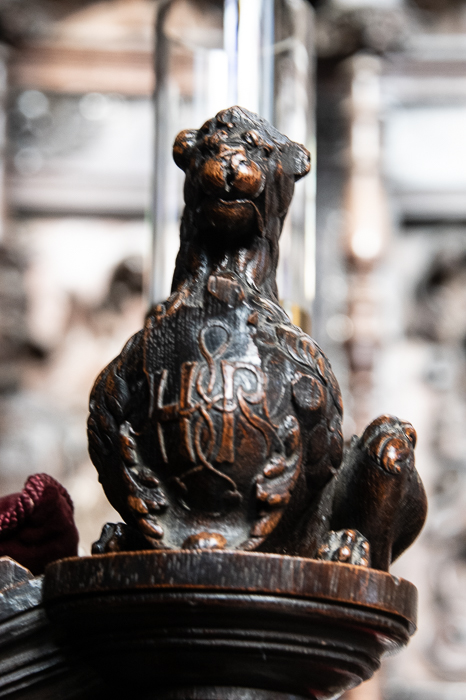
A small carving on the railings of the Choir. You will see carvings like this in most choirs of older churches and they are always a treat to find and enjoy
Queens College
This series of buildings was built in 1460 and are now the oldest surviving buildings on the Banks of the River Cairn. The Cloisters were built in the 1590s.
The Chapel was designed by George F. Bodly and was consecrated in 1891. The design follows those of other College chapels with an aisleless nave and a row of pews on either side.
There are pages and pages and pages written about this clock and sundial, but the truth is no one really knows who designed it or when.
Part of Queens College and probably one of the most photographed bridges in Cambridge is this wooden bridge. The original bridge was constructed in oak in 1749 by William Etheredge. This existing bridge is made of teak and was completed in 1905. It was not designed by Newton and has always had screws or bolts at the main joints.
Other Colleges
Many of the colleges are not open to the public, but one can admire their entrances from afar.
The main gate or gatehouse of St John’s College is crenelated and adorned with the arms of the foundress Lady Margaret Beaufort. Above these are displayed her ensigns, the Red Rose of Lancaster and Portcullis. The college arms are flanked by creatures known as yales, mythical beasts with elephant’s tails, antelope’s bodies, goat’s heads, and swiveling horns. Above these amazing beasts is a tabernacle containing a socle figure of St John the Evangelist, an Eagle at his feet, and a symbolic, poisoned chalice in his hands.
Other Structures around Cambridge
The Church of the Holy Sepulchre was built around 1130, with its shape being inspired by the rotunda in the church of the Holy Sepulchre in Jerusalem. It has seen many alterations.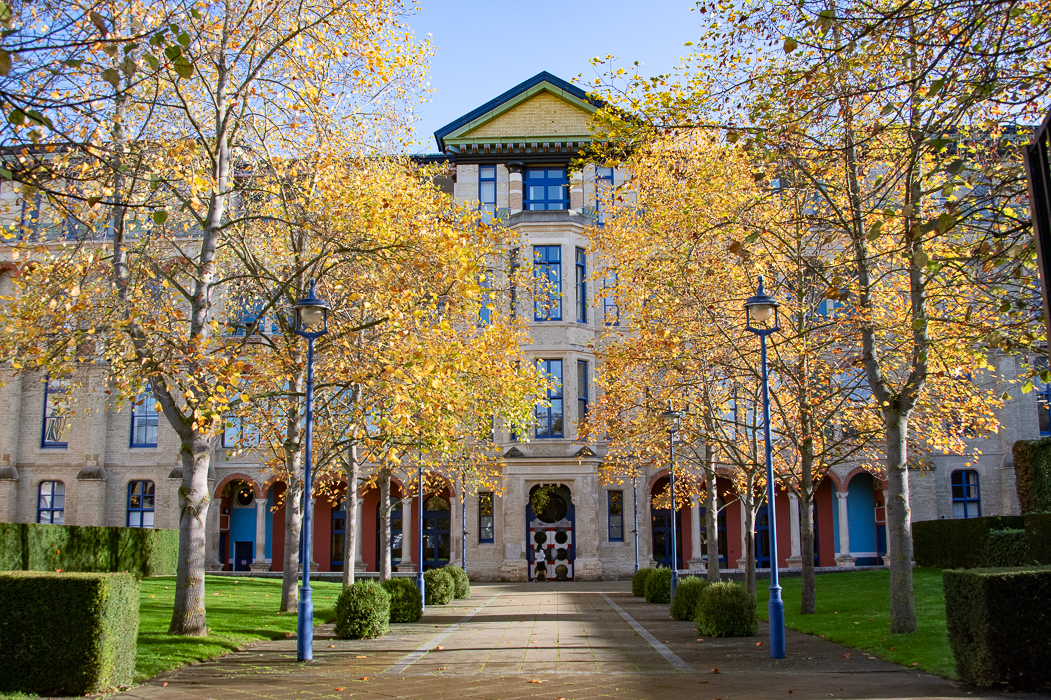
This building was originally the Addenbrooke’s Hospital. There are several Georgian buildings behind this façade, designed by Mathew Digby Wyatt in 1866. I just really liked the round windows.
*
This neo-classical designed building was by George Basevi (1794–1845) and completed by Charles Robert Cockerell (1788–1863) after Basevi’s death in October 1845 houses the Fitzwilliam Museum.
Above the door of a stately Georgian building, opened in November 1934, and designed by Sir Herbert Baker, R. A. sits this lovely bust of Scott.
SPRI was founded by Frank Debenham in 1920 as the national memorial to Captain Robert Falcon Scott and his companions, who died on their return journey from the South Pole in 1912.
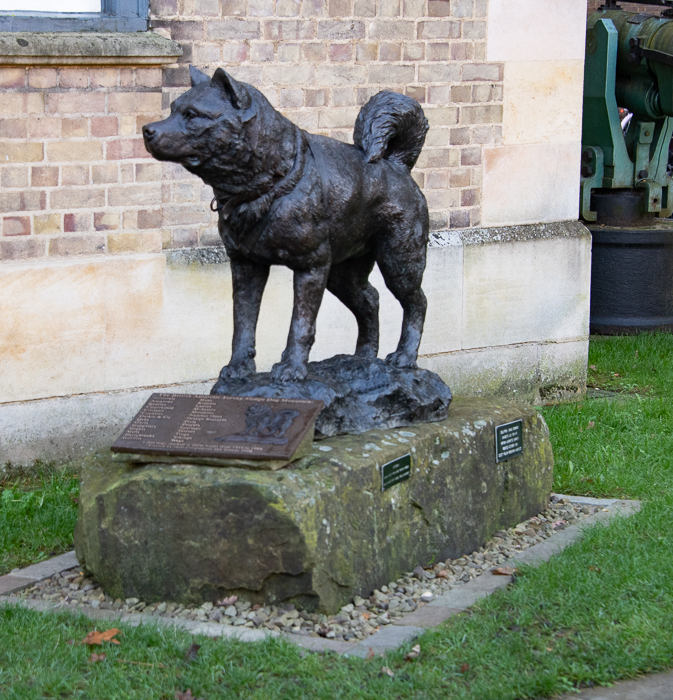
In front of the institute is a life-size bronze British Antarctic Survey (BAS) Husky to pay tribute to these hard-working dogs.
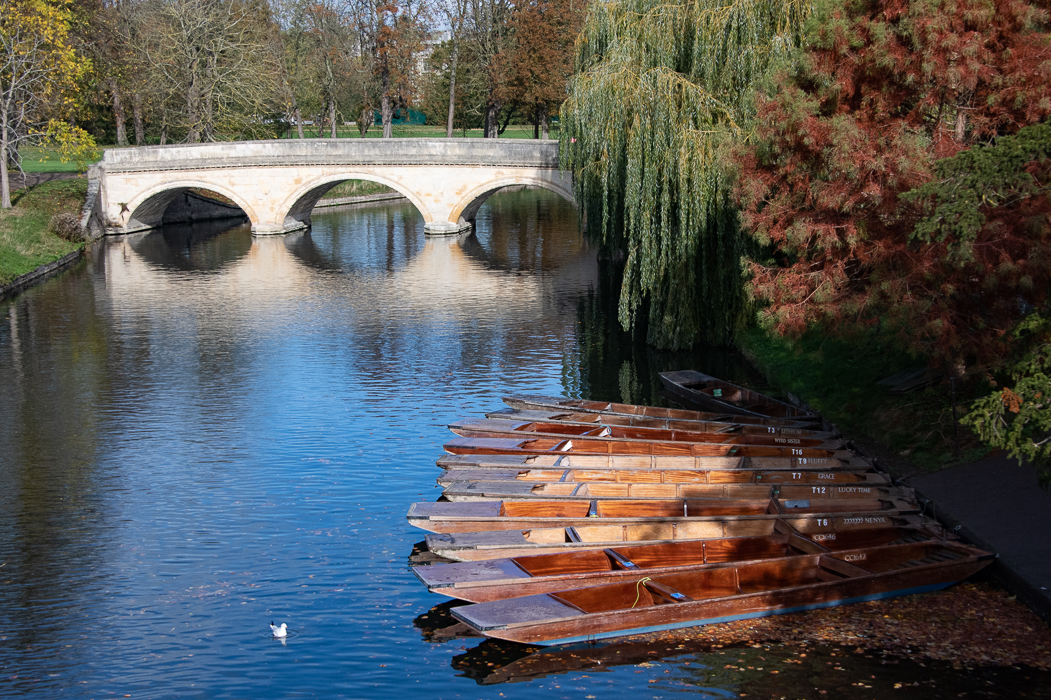
Standing on the Garret Hostel Bridge looking towards Kings College Bridge that crosses the River Cam
The current stone structure of the Kings College Bridge was designed by famous British architect William Wilkins in 1818 and it was constructed by Francis Braidwood in 1819.
The Kings Cross Bridge is the only real way to see the Garret Hostel Bridge, but that part of the campus is closed to visitors. This was taken from The Backs. The bridge was designed by Timothy Guy Morgan, who at the time was an undergraduate student at Jesus College, after an open competition. Morgan died in 1960 before the bridge was completed. It was one of the first post-tensioned concrete bridges in the UK.
By evening, I was exhausted, my back was killing me from carrying around a 7-pound camera, and then I found this, just exactly the thing that gets me excited.
In the late 1500s, Cambridge was affected by the plague and other diseases. As in so much of the world, the diseases of that time were thought to be caused by ‘bad air’ resulting from the sewage-contaminated water in the river and local ditches.
For this reason, between 1610 and 1614, a watercourse was built by Thomas Hobson to bring fresh water into the city from springs at Nine Wells, a local nature reserve.
This hexagonal monument to Hobson, which once formed part of a market square fountain, was moved to this location in 1856, after a fire in the Market.
Cemetery
You didn’t honestly think I would leave Cambridge without a stop at a cemetery did you? Ascension Parish Burial Ground is considered the “brainiest cemetery in the UK”, as it contains the remains of astronomers, biologists, engineers, poets, and philosopher, including three Nobel Prize winners.
Ascension Parish Burial Ground was established in 1857, although the first burial was not until 1869. It covers one and a half acres and contains 1,500 graves with 2,500 burials. It was closed to new burials in 2020.
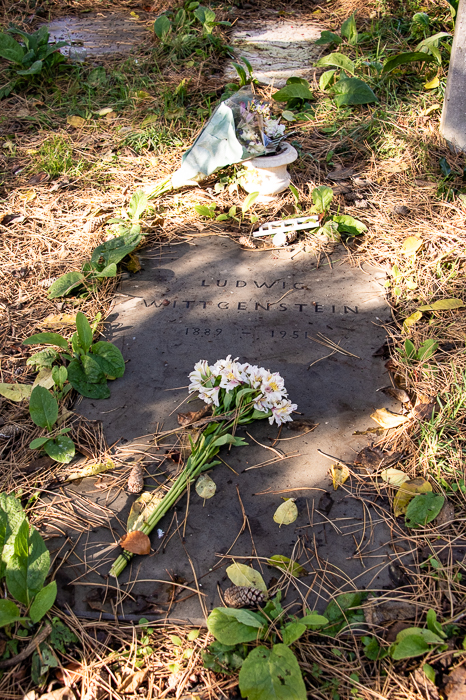
The grave of 20th-century philosopher Ludwig Wittgenstein. Patti Smith took a Polaroid photo of his grave, which formed part of her “Land 250” exhibition in 2008.
I took a cab ride out to the cemetery and a cab ride back to my hotel. Neither cab driver had heard of the place, it is in need of love, but really worth taking the time to find.
There is so much to see and do in Cambridge, but I only had one day. I must return.
